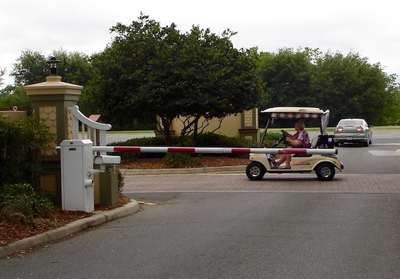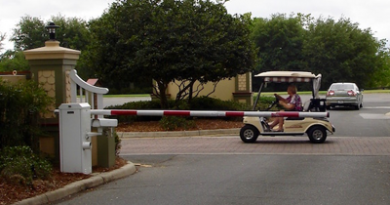Product Diversity Heightens the Importance of Dealers
If you hadn’t noticed, personal transportation vehicles are emerging from the factory in greater variety and with more options. As the golf car industry reduces its dependence on golf car fleet sales, and shifts to personal transportation vehicles, dealer networks become increasingly more important. In fact, the network of dealers becomes the centerpiece of strategies for growing sales and increasing market share.
While fleet sales are still the largest component of unit sales, total segment revenues favor heavily personal transportation vehicles (PTVs). The table below tells you why the revenues from PTVs have surpassed those of the more numerous units sold to golf courses:
As you can see the table on the right relates to Club Car’s popular Onward model. Starting with a base price of $8,500, the got-to-have add-ons bring the total to just under $12,500. So, that is a bump-up of 47%. The base price itself is about $3,000 higher than that of a typical fleet golf car.
PTV Market More Like Powersports Market
The powersports market is quite diverse in its offerings, inclusive, as it is, of motorcycles, off-road vehicles, and snowmobiles. There are well over 1,000 different models from numerous large manufacturers, including Polaris Industries, Yamaha, Kawasaki, Textron Off-Road, and American Landmaster.
Club Car Onward® Pricing Matrix


Source: Small Vehicle Resource, LLC/www.clubcar.com
With the emergence of the PTV, the traditional golf car product is beginning to resemble the same aspects of personalized diversity that characterizes the plethora of powersports offerings. While the PTV market is still dominated by the “Big Three” of the golf car industry, do not be surprised if new companies enter the market with new designs and features.
The “Long-Tailed” Market for PTVs
In 2006, a book, authored by Chris Anderson, entitled, The Long-Tail: Why the Future of Business is Selling less of More, was published, which capsulated the growing trend not only in electronics, but in many other markets, as well. In case you don’t know who Chris Anderson is, he is the publisher of Wired Magazine, which has consistently documented cutting edge products and technologies, and new applications for, now, a good number of years.
Clearly, PTVs are part of a long-tailed market. And, manufacturers and dealers have exploited the appeal of diversity via their on-line accessorizing features. Some of these features are factory-installed and some installed at the dealership.
(The full details of the PTV market can be accessed via a subscription to Small Vehicle Resource’s latest market study. Contact me a t smetzger@smallvehicleresource.com.)
The question now is can this personalized PTV market morph into broader markets and greater opportunities?
Key Actors in Developing New Markets
Dealers are at the cutting edge of electric power transportation. Across all small electric, point A to point B vehicles, the diversity of is astounding: electric bikes, electric scooters, electric skateboards—you name it, it’s here and now. What will bring the PTV further along in its product and market evolution? (I coined the term, “urban mobility vehicle” or UMV to characterize the potential market.) Having some experience now—almost two decades—of observing the golf car industry two people will point the way forward. From within manufacturing companies, it will be product development engineers, pushing the higher-ups to adopt and incorporate in new models the superior performing components that are already sitting, waiting in the marketplace.
“Outliers” Who Are Pushing into New Markets
The second group that will expand the market in new directions will be your neighborhood golf car dealer. Here is how two dealers are pushing their sales efforts into new markets.
Two dealers that have pushed the envelope to create new markets are Brian Rott, CEO of Cart Mart, Inc., headquartered in San Marcos, CA, and John Triolo, who heads up MountainTop Golf Cars in Banner Elk, NC.
Brian is one of the most successful dealers in the country. He is an authorized dealer for Club Car, Yamaha, and Garia and has expanded his business from the company’s original location in San Marcos to now three more dealerships across California’s Southland, including Los Angeles. Diversification is probably the most succinct way of summarizing the key to Brian’s vision and the success of that vision. Sales and revenues are balanced between consumer and commercial accounts, rentals, and a proactive service organization. The commercial side of the business has grown to the point that Brian now has three full-time outside sales associates in his employ.
Perhaps the most innovative initiative that Brian has undertaken is lobbying for legislation to get communities to consider low-speed vehicles as a clean, safe, and convenient alternative to conventional automobiles. Based on this legislation, which has now passed the California legislature, municipalities in San Diego County are encouraged to consider infrastructure adjustments to provide for LSVs. This legislation could be the model for other counties in California—and, who knows, perhaps for the entire country.
John Triolo, owner and CEO of MountainTop Golf Cars, in something of a contrast to Brian, is located in the western hill country of North Carolina, an area, by comparison to Southern California, is sparsely populated. And the business in this beautiful resort location is highly seasonal. Jack, as he is known to his many friends and business partners, is an authorized E-Z-GO, Club Car, and STAR dealer. To broaden his market, Jack, , looked into the potential of the global market. To this end, he and his son-in-law, Mike Williams, have successfully developed a fleet of custom electric transporters for major resorts in the Seychelle Islands.
Built on a Club Car frame and incorporating a powerful AC motor and controller from Hi Performance Electric Vehicle Systems (HPEVS), Ontario, CA, Jack put together a vehicle that could manage the steep climbs from the tourist debarking dock at the shore to the high, inland resort locations.
Lessons Learned/Objectives to be Accomplished
The whole point of citing these examples is that it is the dealer, not the manufacturer that has taken the initiative to increase their business. These dealers, and others could be mentioned, will provide the groundswell that could bring the industry into the 21st century electric mobility revolution. Two key aspects of industry participation in this green mobility process are:
- Meeting performance requirements (e.g., power, distance) of the new era;
- Garnering the cooperation of municipal authorities, whose interest is optimizing traffic patterns in a green environment.
In my estimation, the first requirement has been all but met. Peruse the HPEVS website and SilverWolf’s (Canada), and you will be convinced of this. As to the second, much work needs to be done. Following Brian Rott’s example, however, and with support from key manufacturers, this can also be accomplished.
Actually, it is the manufacturers that need to be more involved in the second endeavor. Traditionally, they have been reluctant to push the LSV, on-road concept because of liability concerns. By involving municipalities, however, in a “safe-road” planning process, these concerns would be greatly mitigated.
Contact the Author: Steve Metzger at smetzger@smallvehicleresource.com. Or check out our website at www.smallvehicleresource.com, where you will find an extensive database of vehicle models and can make side-by-side comparisons of vehicles based on a full set of specifications.


